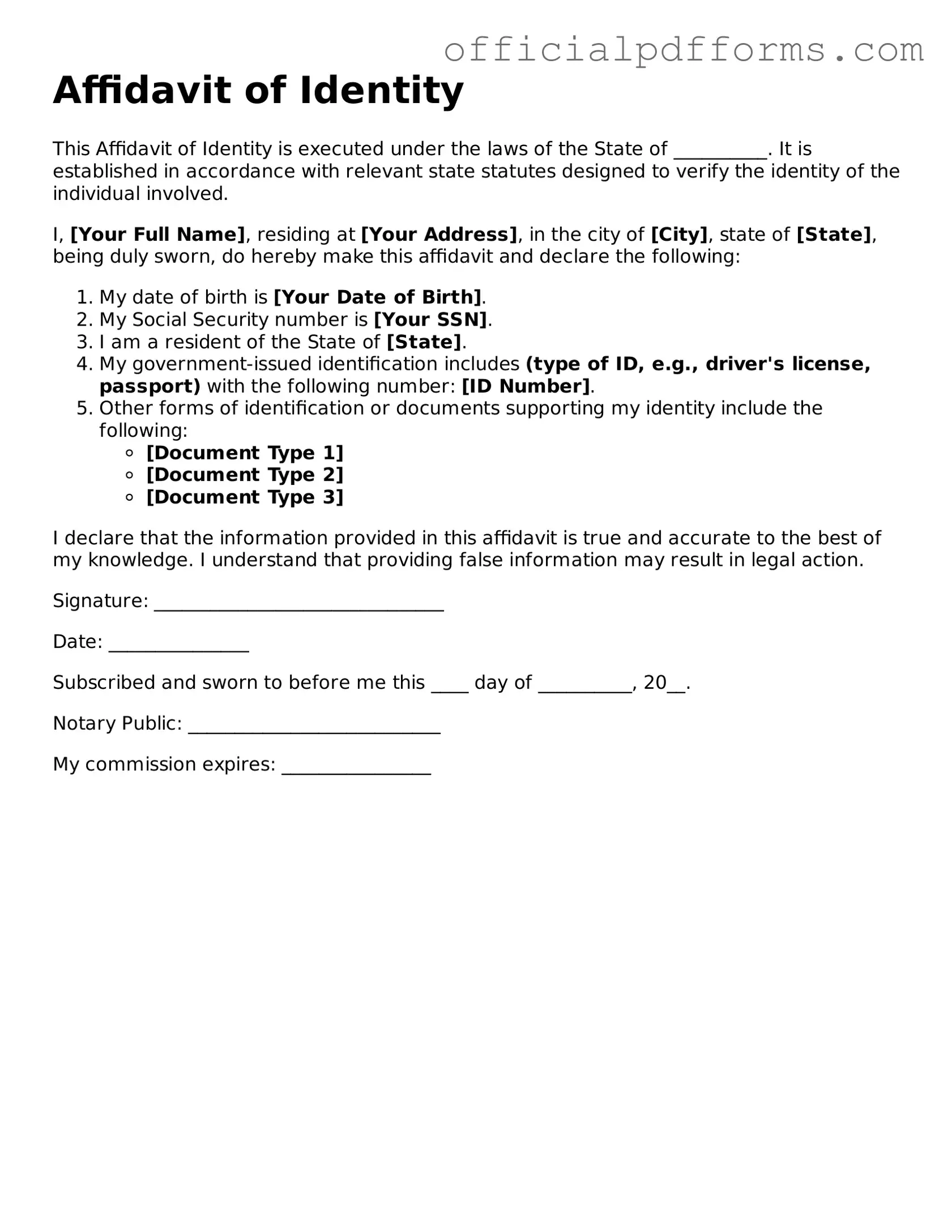What is an Affidavit of Identity?
An Affidavit of Identity is a legal document that helps verify a person's identity. This form is often used in various legal and financial situations, such as when someone needs to confirm their identity for a bank account, legal proceedings, or other official matters. By signing this affidavit, an individual swears that the information provided about their identity is true and accurate.
Who needs to complete an Affidavit of Identity?
Anyone who needs to prove their identity in a formal setting may need to complete this affidavit. Common scenarios include:
-
Opening a bank account
-
Applying for a loan
-
Participating in legal proceedings
-
Resolving issues related to lost identification
The Affidavit of Identity usually contains essential personal information such as:
-
Your full name
-
Date of birth
-
Address
-
Social Security number (if applicable)
-
Details about the identification documents you possess
Is an Affidavit of Identity legally binding?
Yes, an Affidavit of Identity is a legally binding document. By signing it, you affirm that the information you provided is true. Misrepresentation or false statements can lead to legal consequences, including criminal charges in some cases.
How do I complete an Affidavit of Identity?
Completing an Affidavit of Identity typically involves the following steps:
-
Obtain the form from a reliable source, such as a legal office or online template.
-
Fill in your personal information accurately.
-
Sign the affidavit in the presence of a notary public, who will verify your identity and witness your signature.
Do I need a notary public to sign the Affidavit of Identity?
Yes, most jurisdictions require that an Affidavit of Identity be notarized. A notary public serves as an impartial witness to your signature, ensuring that the document is executed properly. This adds an extra layer of legitimacy to the affidavit.
Where can I use an Affidavit of Identity?
An Affidavit of Identity can be used in various situations, including but not limited to:
-
Banking institutions
-
Courts and legal proceedings
-
Government agencies
-
Real estate transactions
